8.6 /10 1 Votes8.6
4/5 Touch Arcade Producer(s) Yukinobu Chida | 4.5/5 Google Play Initial release date 26 January 1987 | |||||||||||||||||||||||||||||||||
 | ||||||||||||||||||||||||||||||||||
Similar Dragon Quest games, Enix games, Role-playing video games | ||||||||||||||||||||||||||||||||||
Dragon quest ii luminaries of the legendary line part 1 i am the prince of midenhall
Dragon Quest II: Luminaries of the Legendary Line is a role-playing video game (RPG) developed by Chunsoft and published by Enix (later merging with Square to become Square Enix) in 1987 for the Family Computer (or Famicom) as a part of the Dragon Quest series. Enix's U.S. subsidiary published the American version of Dragon Quest II for the Nintendo Entertainment System (or NES) in 1990. Dragon Quest II is set one hundred years after the events of the first game.
Contents
- Dragon quest ii luminaries of the legendary line part 1 i am the prince of midenhall
- Dragon quest ii iphone ipod touch ipad gameplay
- Gameplay
- Plot
- Development
- Music
- Remakes
- Other media
- Sales
- Reception
- References
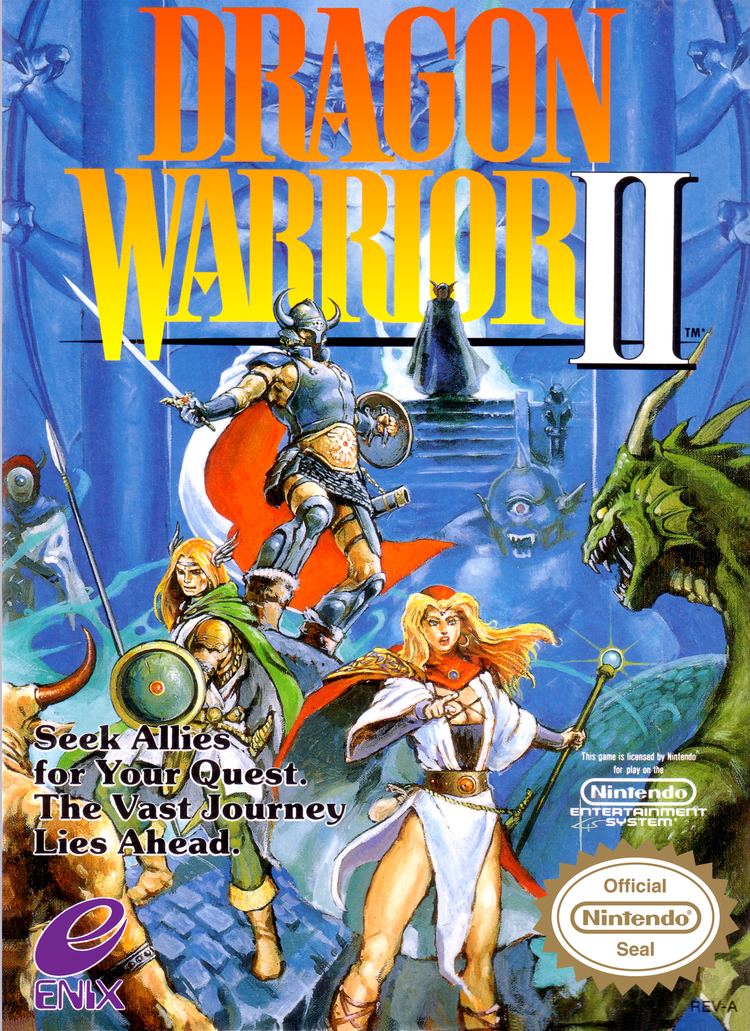
The game's story centers on the prince of Midenhall, who is ordered to stop an evil wizard named Hargon after Hargon destroys Moonbrooke Castle. On his adventure, he is accompanied by his two cousins, the prince of Cannock and the princess of Moonbrooke. Dragon Quest II greatly expands on the series formula from the first game by having a larger party, more areas to explore, multiple heroes and enemies in a battle, and a sailing ship.The game's successor, Dragon Quest III: And Into the Legend..., follows the ancestor of the main characters, the legendary hero Erdrick; and the three games are collectively called "Erdrick Saga Trilogy".
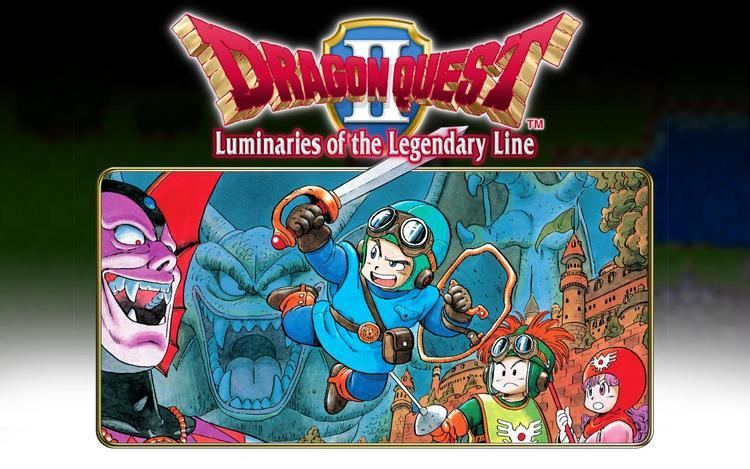
Planning began a month before the original Dragon Quest was released. One major goal was the development of a more exciting combat system, which was inspired by similar multi-character party systems such as the one found in Wizardry. The artwork that was used as the basis for the characters and monsters was painted by Akira Toriyama and then translated into pixel art. The game was hit with delays due to game balance, which were only fully corrected in the early sections of the game. This, combined with a staff that included students not familiar with the coding and debugging process, pushed back the release by a month. The developers also had many ideas that had to be discarded due to the technical limitations of the Famicom system, though some were later incorporated into subsequent remakes and the game's sequel, Dragon Quest III.

Dragon Quest II was successful in Japan; the original Famicom version shipped 2.4 million copies. Later, the game was remade for the Super Famicom and the Game Boy Color and combined with the original Dragon Quest game in a release entitled Dragon Quest I & II. A version of the game for Android and iOS was released in Japan on June 26, 2014 and worldwide on October 9, 2014, as Dragon Quest II: Luminaries of the Legendary Line. The game was praised for improving on almost all aspects of the original, including having better graphics, having a larger world to explore, and more characters to participate in a more dynamic combat system. It was also known as one of the most difficult Dragon Quest games, especially late game, and retained that reputation despite adjustments made when it was ported to other platforms.
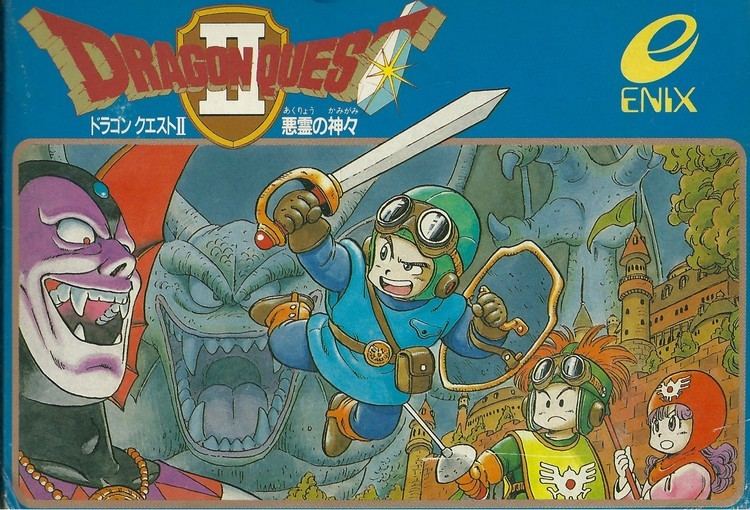
Dragon quest ii iphone ipod touch ipad gameplay
Gameplay

Dragon Quest II is a role-playing video game. It allows the player to control more than one character, each of whom has their own characteristics, and it is the first game in the Dragon Quest series to do so. The game introduced a party system where, instead of beginning the game with an entire party as was common in previous computer RPGs, the player begins the game with only one character and gradually recruits more party members during the course of the game. The player controls his or her characters as they move in the game world. They can search treasure chests, talk and trade with villagers, equip themselves with weapons and armor, and cast spells.
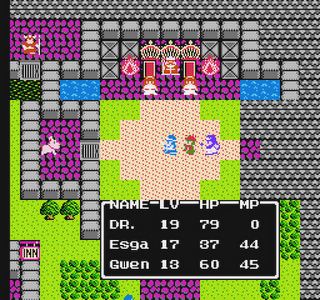
While wandering fields, towers, caves, seas, and dungeons, the player randomly encounters monsters, after which the game shifts to battle mode. The game's battle mode introduces groups of monsters, which is an upgrade from the one-on-one battles of Dragon Quest. In the battle mode, the player gives orders to the characters on how to fight the monsters. Once the player defeats all of the monsters, the characters gain experience points and gold. The experience points raise the characters' experience levels. This improves the characters' attributes, and they may also learn new spells.
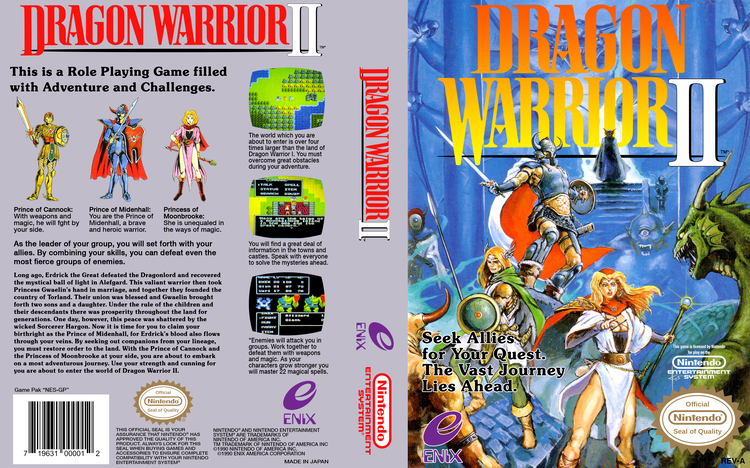
To win, the player must fight monsters to improve the characters' experience levels and get gold to buy better weapons and armor. Eventually, the player's characters become strong enough to make it to the next town or dungeon. This repeats until the player reaches the final boss and defeats him. However, the gameplay is not necessarily linear, especially after the player gets the boat. Exploration is a key component of the game. The game offers a few spots to save the game. In most of the towns, talking to a king or minister saves the game. In the American version, which incorporated a battery for saved games rather than the password system of the original, talking to the king also allows for the deletion and moving of saved games.
Dragon Quest II is noted for greatly expanding upon the gameplay of the previous game, Dragon Quest. The game is the first in the series to feature multiple heroes and enemies in a battle, as well as a sailing ship. It also allowed the player to land the ship anywhere, making it possible to explore the entire game world in an open-ended manner. It included other new gameplay features such as weapons which cast spells when used in battles. Compared with its predecessor, Dragon Warrior II offers a wider array of spells and items and a much larger world. The game also expanded the inventory management system of its predecessor by giving each character an individual inventory that holds up to eight items, placing a greater emphasis on conservative item management between the characters. Dragon Quest II: Luminaries of the Legendary Line was also the first Dragon Quest game to include a game of chance (played with Lottery Tickets that the player finds), and was also the first Dragon Quest game to use multiple key types and to include travel doors (warp gates).
Plot
Dragon Quest II is set one hundred years after Dragon Quest. The story begins with an attack upon Moonbrooke Castle by the wizard Hargon, who seeks to summon the demon Malroth to destroy the world. A wounded soldier escaped the battle and fled to the kingdom of Midenhall, where he informs the king of the attack before he dies. The king then commands his son, who is a descendant of Erdrick (known as Loto in Japanese translations and later localizations), to defeat Hargon.
The Prince begins his quest alone, but is later joined by two cousins: the Prince of Cannock and the Princess of Moonbrooke. After finding the Prince of Cannock, who began a similar journey at the same time as the Prince of Midenhall, they save the Princess of Moonbrooke from Hargon's assault on Moonbrooke Castle, which is reduced to ruins. As the trio quest to find and defeat Hargon, they secure a ship that allows them to travel across oceans to reach new continents, including Alefgard, which is where Dragon Quest took place. There they meet the grandson of Dragonlord, the villain from the previous game, who gives the party valuable information. He tells them that by collecting the five crests hidden around the world, the party can create the Charm of Rubiss, allowing them to defeat Hargon and his illusions. After obtaining the Charm of Rubiss, the party travels to Hargon's castle in the ice-covered plateau of Rhone and confronts Hargon in his throne room. Hargon is defeated, but he offers himself to Malroth and the demon emerges to destroy the heroes. Together, the three heroes slay Malroth and return to Midenhall, where the Prince is named the new king.
Development
Like other main games in the Dragon Quest series, Yuji Horii wrote the story for Dragon Quest II, Akira Toriyama did the artwork, and Koichi Sugiyama composed the music. Co-creator Koichi Nakamura, Chunsoft's president, directed the game and did half of the programming.
Planning for Dragon Quest II began in April 1986, a month before the release of the original Dragon Quest. With the system and memory map decided, they started development in early July. At the beginning of development, producer Yukinobu Chida asked director and programmer Koichi Nakamura for a definite release date, and he offhandedly set one. Then the development team was divided into two groups, with one designing the story, as well as the monsters, and one doing the programming. The initial deadline was set for early November, but the game ultimately suffered a small delay. The development team had finished programming almost everything by the time of the initial release and believed the game could be released by the end of that year. In the Japanese magazine Weekly Shōnen Jump, published on November 11, 1986, it was announced that the game would be released in late December. However, the developers found that the game was too difficult, so it was delayed for month to adjust the balance. They had to finish the final version in mid-December, which they did, and then rushed to deliver to Nintendo to make the physical game cartridges. The game was released on January 26, 1987.
The developers believed that Dragon Quest's one-vs-one combat system was "tedious" and too simple, and that the leveling system was "boring", so they decided to have Dragon Quest II use a party system with players controlling multiple characters. In another game from the time entitled Wizardry, players can control a party of up to six characters directly; Nakamura saw this, liked the idea, and wanted to do something similar. Due to technical restrictions, they decided to use only three characters; the Famicom video game system supports the display of up to eight sprites side by side, and one game character used two units in a direction, so it was possible for up to three characters to talk with a non-playable character (NPC). Yuji Horii believed many players would play Dragon Quest II without first playing Dragon Quest, and thus had players search for the other party members. During development, the staff discussed the idea of deprecating the "stair" command of the predecessor several times. Nakamura has stated that the Cave of Rhone found in the game is inspired by a classic trick to exit mazes, that of always moving forward while sticking to the right hand side wall to avoid traps.
In the story group, monsters were the first thing designed. The monsters' names, skills, and personalities were decided first, after which they were drawn by artist Akira Toriyama. Yuji Horii allowed Toriyama to paint full drawings rather than directly create the pixel art that would be shown in the game. The artwork was then converted into computer graphics; as Toriyama was unfamiliar with computer graphics technology, other staff took charge of this. Many new monsters needed to be designed to make the game feel real, and the process was laborious for Toriyama. But he has also said that, compared to the manga comics he was used to, he enjoyed painting more, so on balance the experience was positive. Yuji Horii stated that for his process, like other manga and film creators, he quickly outlines the story's plot in his mind. With regard to map design, a blank map was used to create the physical shape of the place, like a castle, cave, or tower, and then the key elements and story were created together afterwards. The scenarios were mainly written by his friend Hiroshi Miyaoka. Compared with write lines in writing paper and design map in graph paper, staff wrote both two in 5 mm graph papers of A4, as they felt that's easy for organization; their manuscript thickness is 15 cm.
Compared with its predecessor, the game was more advanced in nearly all technological aspects. Koichi Nakamura programmed with several students, but since it was his first time working with a team, he didn't know how to delegate work or communicate his goals. Since the students were unfamiliar with the coding process, they did not know how to debug or to keep track of whose code it came from, so Nakamura had to do it himself, which caused delays. In programming, they did the maps first. Then they worked on characters, including numbered characters in maps for assigned lines, and designed the NPC's moving route. The next step was programming the items, while the final step was setting the monsters data and converting Toriyama's artwork. This work was completed by the end of October.
Due to the aforementioned balance issues, the game was initially very difficult, especially in the later stages. Nakamura had written a program that simulated every single combat that he used to adjust the games setting for character leveling and the strength of enemies players would encounter. This program failed to account for larger monster groups, however, which fell outside the model and caused the game to be very difficult. Further more, enemies leveling and weapons power were designed by area, but Koichi Nakamura didn't think over the boat, so if player get the boat to some land might be quickly killed. The developers realized there was a balance problem and did some modifications, such as limiting the number of enemies in Midenhall to groups of three, and moving the Cannock Castle closer to Midenhall Castle.
Due to a lack of cartridge space, many ideas were abandoned during development, such as an alternate ending that the Lorasia Prince is killed by the Prince of Cannock's sister if he dies in the final battle. Some elements were later used in remakes or sequels: a subplot about the Prince of Cannock being cursed was added to the Super Famicom remake and later remakes. Also, the Promontory of Olivia in Dragon Quest III was initially an idea for Dragon Quest II. The game cartridge's ROM capacity is 1 Mbit, but only about 10 bytes of free space remains in final products.
The North American release of the game as Dragon Warrior II was created by Enix themselves and published in 1990. Unlike the original Japanese Famicom version, which used passwords for saving, the NES version used an internal battery backup instead to record the player's progress. The storyline introduction in Moonbrooke is presented exclusively in Dragon Warrior II. In the Japanese original, the game starts right with the injured soldier from Moonbrooke entering Midenhall castle, seeking help from its king. The dialogue of the American localization often used (intentionally) archaic English vocabulary, among other differences from the Japanese version. Like Dragon Warrior, the American version of Dragon Warrior II was censored in some aspects; for example, it used a ghost-like sprite instead of the original defeated character's coffin with cross sprite.
Music
Koichi Sugiyama composed and directed the music for the game. The first album of Dragon Quest II, Suite Dragon Quest II ~Gods of the Evil Spirits~, was released in February 1987. It covers ten orchestra version soundtracks with a twenty-five minute "original sound story"; this suite was performed by the Tokyo Strings Ensemble. Some of the tracks are classical and some are jazz. On August 20, 1987, the first "Family Classic Concert" was held. In this concert, Dragon Quest and Dragon Quest II's music was performed by the Tokyo Strings Ensemble. Later in October 1987, the concert recording was released as symphonic suite CD under title Dragon Quest in Concert. Music of Dragon Quest II were also released as a piano CD, a Drama CD and several Symphonic Suite albums. Dragon Quest II's musics were also collected in music compilations, like Symphonic Suite Dragon Quest Best Selection Vol.1 ~Roto~ (1997), Dragon Quest Game Music Super Collection Vol. 1–3 (2001–2002), Symphonic Suite Dragon Quest Complete CD-Box (2003) and Symphonic Suite Dragon Quest Scene-Separated I~IX (2011).
"Only Lonely Boy" the background music in the game's name and password input interface, is a single by Anna Makino. Since the original Dragon Quest opened with a pop song, Sugiyama decided to use this song make the games stylistically connected. This music is also used for Japan professional baseball team Chiba Lotte Marines' fight song. The song that is played when wandering the fields of Dragon Quest, "Unknown World", is also played when the Hero is in that area. The ending theme "My Road, My Journey" is also the ending song of related anime Dragon Quest: Dai's Great Adventure.
Remakes
Dragon Quest II was ported to MSX computers in February 1988, but the ported version had many issues like choppy scrolling, black-surround characters titles, poor graphics, along with sluggish combat and menus. The MSX2 ported version was released in May 1988 in Japan.
On December 18, 1993, Dragon Quest II was remade and combined with Dragon Quest as part of Dragon Quest I & II for the Super Famicom, which used Dragon Quest V's engine. Besides enhanced in graphics and sound, gameplay was also improved. The Super Famicom remake features an improved enemy targeting system: if an enemy is defeated before a character who was assigned to attack can perform its attack move, the character will attack another enemy rather than do nothing like in the Famicom version. And like its successors, players can find stat-improving items from pots or dressers. The Super Famicom remake was only released in Japan.
In 1999, Dragon Quest I & II was released for Game Boy Color; the game is also compatible with Game Boy. A year later, it was localized in America as Dragon Warrior I & II. This remake is similar to the Super Famicom version, bit with 8-bit graphics. Compared with the NES version, it featured better graphics and was less difficult. The remake also provided a quick-save function to allow players save and load game anywhere unless they reset the Game Boy. In the Game Boy Color localization, the main characters' and towns' names were retranslated to be similar to the original Japanese names: legendary hero "Erdrick" was retranslated as "Loto", and the castle name "Midenhall" was re-dubbed "Lorasia". The original translation had a lot of errors, and Enix changed the names to help fix that.
Dragon Quest II was remade for Japanese NTT DoCoMo brand cell phones in 2005. The remakes size was four times bigger than the original Dragon Quest port, and since phone capacity was limited, the game was divided into two parts. The first part was pre-installed in cell phones and the second part could be downloaded for free. The world map was provided by a pre-installed PDF file. In 2006 Japanese mobile companies BREW and SoftBank also started selling the game on their mobile platforms.
Both the Famicom and Super Famicom versions of this game, along with Dragon Quest and Dragon Quest III, were re-released under the Dragon Quest 25th Anniversary Collection compilation for the Wii in Japan on September 15, 2011. The Wii compilation featured interruptive save functions for each games. The compilation also included original copies of the strategy guides for the games, along with original artwork and material on the games' development.
Square Enix announced the first eight Dragon Quest titles would be re-released on Android and iOS in Japan. This Dragon Quest II was based on the previous cell phone version while optimized for smartphones and was released on June 26, 2014 in Japan. An English version was released on October 9, 2014 under the title Dragon Quest II: Luminaries of the Legendary Line. Square Enix registed this trademark in Japan in 2013, and in United States in early 2014.
Other media
Several guide books were published: the first was published by Shueisha in February 1987, the second by Tokuma Shoten in July 1987, and the third by game publisher Enix in 1988 as an "official guide book".
Similar to other early main games in the series, Dragon Quest II was novelized and adapted to game books. The Dragon Quest II Novel was written by Hideo Takayashiki and published in 1989; it was reprinted in 1991 and 2000. The Dragon Quest II Game Book series was also published in 1989.
Sales
The Famicom version sold approximately 2.4 million copies in Japan. Together, both the Super Famicom and Game Boy Color remakes shipped in excess of 1.92 million copies worldwide. The Japan Mobile version was downloaded more than one million times. The game was included in a 2011 compilation called Dragon Quest Collection for the Wii, which sold 403,953 copies.
Reception
Dragon Quest II received both critical and financial success in Japan. Readers of Family Computer Magazine gave it a score of 28.02 out of 30, and named it the best overall cartridge game of the year. In 2006, readers of Famitsu magazine voted the game the 17th best video game of all time.
The game is generally known for fixing problems found in the first game, including improvements such as allowing parties of three characters, having a larger world, better graphics, and the ability to carry more items. Other noted improvements were keys that can be used multiple times and new strategic elements introduced because of larger parties and larger groups of enemies. The game's music is often praised, despite its limited 8-bit capabilities. Considered a classic for the RPG genre, the game is regarded as praiseworthy. Japanese reviews highlighted the Famicom version's difficulty, stemming from issues such as the many traps in the Cave of Rhone, and the final boss's ability to cast a "Healall" spell, and this has led to some critics calling the game "the most difficult Dragon Quest". After Dragon Quest III released, director Koichi Nakamura said "In result, Dragon Quest II received favourable from everybody, but as me creator's side, I feel that I did about only half what I wanted to do."
Remakes of Dragon Quest II were also successful and well received. Famitsu awarded the Japanese Super Famicom remake a 35/40. The Game Boy Color remake got a 30/40 from Famitsu, and the U.S. version, Dragon Warrior I & II, received fairly high marks, including an 8.0 out of 10 from IGN, a 9.6 out of 10 from GameSpot, and 8 out of 10 from Nintendo Power. It also received the RPGamer's Game Boy Color Award of the Year for 2000.
Other media
The release of Dragon Quest II also promoted sales of the original Dragon Quest, and with the success of Dragon Quest II, the series became a Japanese cultural phenomenon. The sequel to Dragon Quest II, Dragon Quest III: And Into the Legend..., was released in 1988 in Japan. It serves as a prequel to the first two games and follows the ancestor of the main characters, the legendary hero Erdrick; the three games are collectively called "Erdrick Saga Trilogy". Also with the success of Game Boy Color remake, Enix released a Game Boy Color Dragon Warrior III in 2001, which was based on a previously unreleased Super Famicom update of the original Famicom Dragon Quest III. The world of Dragon Quest II was later used as the setting of Dragon Quest Monsters: Caravan Heart on the Game Boy Advance.
